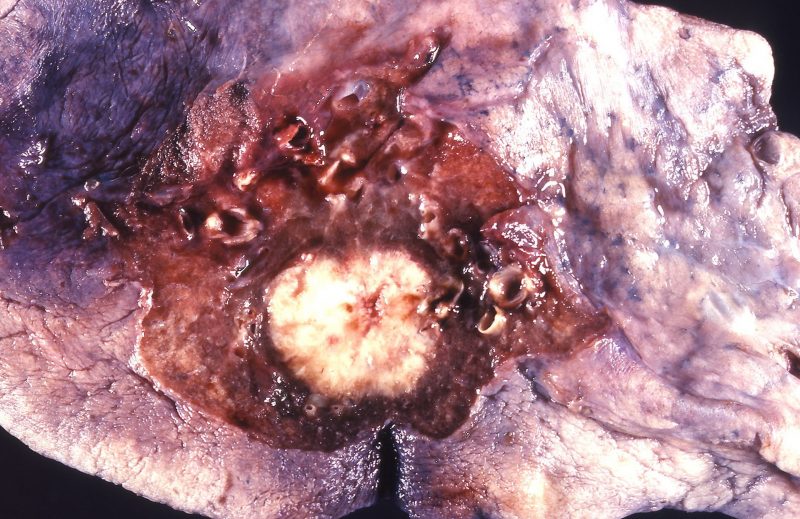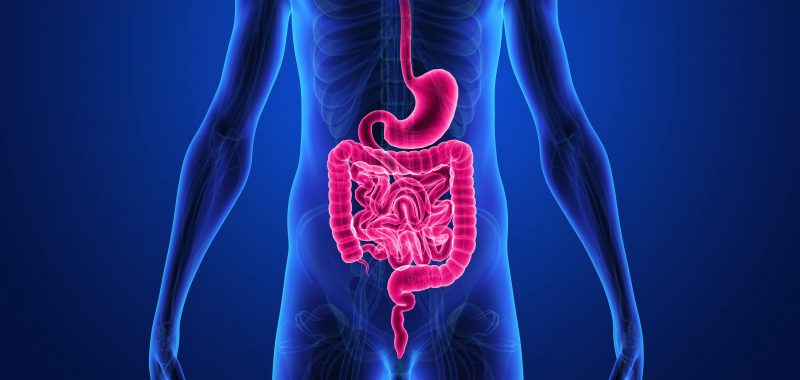Malignant neoplasms having both external and internal localization in various organs are quite common. Among the types of oncological diseases, moderately differentiated adenocarcinoma occupies one of the first places in comparison with other volumetric processes.
Material Content:
What is moderately differentiated adenocarcinoma
This is a cancerous tumor that grows from the epithelium of glandular tissues. Malignant pathology can occur in almost any organs, since glands are present in the integumentary layer on its internal surfaces.
By its aggressiveness and the degree of differentiation, adenocarcinoma can manifest itself in the following types:
- highly differentiated tumor - morphological changes in the cells are slightly expressed, as a result of which the growth and spread of malignant pathology is asymptomatic for a long time. It is often diagnosed in the late period of its development;
- moderately differentiated tumor - there are more pronounced changes in the cellular structure, as a result of which the growth and spread rate of the malignant pathology are of average importance;
- a low-grade tumor is the most aggressive formation, the morphological parameters of the cell structure of which have significant changes, as a result of which it is not possible to attribute them to any kind of tissue. Education is prone to rapid growth and metastasis in the early stages of development.
Moderately differentiated adenocarcinoma occupies an intermediate position between these 2 species. The aggressiveness and ability of the tumor to spread rapidly will depend on the mutation of its cell structure, that is, on differentiation.
This parameter is an important indicator of the characteristics of malignant lesions, determined histologically. The presence of a significant number of morphologically altered cell structures indicates a malignant current process.
Causes and signs of occurrence
The causes of oncological pathology have not yet been clarified. But there are a number of factors contributing to the emergence of this serious illness.
These include:
- adverse environmental environment - work in patients associated with harmful working conditions, with electromagnetic or radioactive radiation, contact with aggressive materials entering the body through the skin or upper respiratory tract;
- chronic inflammatory processes of internal organs;
- improper diet with a predominance of the use of fatty protein foods and a lack of intake of fresh vegetables and fruits;
- hereditary predisposition;
- benign formations of internal organs with the ability to malignancy;
- chronic stress.
Any of these factors can contribute to this severe pathology. Much depends on the lifestyle, individual characteristics of the body and the quality treatment of chronic diseases.
The manifestation of the disease will depend on the location of the process, the degree of its development. The initial manifestations of adenocarcinoma are characterized by an asymptomatic course, therefore, a malignant neoplasm is often detected at later stages of development.
Symptoms and types of disease
In most cases, the symptoms of the volumetric process begin to appear at the 3-4th stage of their development, when the patient has health complaints, and with an objective examination, the specialist reveals the presence of pathology.
The most common common symptoms of a disease are:
- increased weakness and fatigue;
- causeless weight loss;
- pain and discomfort at the location of the tumor;
- sleep disturbance;
- periodic increase in temperature to subfebrile digits;
- disruption of the intestines and stomach;
- the development of anemia.
The appearance of these general symptoms of the disease requires a mandatory examination, since this symptomatology does not always indicate the presence of an oncological process. But if the diagnosis of adenocarcinoma is confirmed, the treatment process should be started as early as possible.
Rectal lesions
The "favorite" place for localization of adenocarcinoma is the large intestine, which accounts for up to 80% of the total number of malignant pathologies. Tumor development occurs from glandular tissue cells with localization in the final section of the digestive tube.
Factors contributing to the development of the malignant process of the rectum will be common to any cancer pathology. But the risk of adenocarcinoma increases with the presence of polyps in the rectum, which are a precancerous disease.
Particularly dangerous is diffuse polyposis, which is an accumulation of cells of an abnormal structure. A great risk for the development of oncology is the presence of a villous polyp, which has the ability to produce intestinal mucus.
In the early stages of growth, a moderately differentiated colon adenocarcinoma does not manifest itself. Over time, typical general symptoms appear, indicating the development of a pathological process, and then specific symptoms join in, indicating intestinal pathology.
The following manifestations of the disease begin to bother patients:
- the presence of fresh blood in the stool with the further appearance of mucus and pus;
- pain syndrome becomes more pronounced;
- bloating;
- bowel disorder in the form of alternating constipation and diarrhea;
- false urge to defecate (tenesmus);
- aversion to meat food;
- pain during bowel movements.
With the progression of the disease, the development of partial intestinal obstruction is possible. Frequent bleeding due to trauma to the rectal tumor pathology with hard feces leads to the development of anemia. Malignant neoplasm, which is in the stage of decay, can give the clinic a pronounced general intoxication of the body.
Important! The appearance of the first non-specific signs of deviations in the state of health and minor changes in the function of the large intestine requires a mandatory examination by a gastroenterologist in order to exclude malignant formation.
Uterus and stomach
The development of uterine adenocarcinoma in women is the most common pathology after breast cancer. This oncological disease most often occurs between the ages of 40 and 65 and is a hormone-dependent pathology. At this age, women begin hormonal restructuring of the body, accompanied by an increase in the number of glandular structures in the epithelial layer of the cervix.
The risk of developing a reproductive organ adenocarcinoma may be due to the following factors:
- early puberty;
- late onset of menopause;
- polycystic ovary;
- 2-3 degree obesity;
- long-term use of hormonal preparations containing estrogen in large doses.
The presence of adenomatosis and uterine polyposis often results in tissue malignancy with the development of adenocarcinoma.
An oncological disease may not manifest itself for a long period. The appearance of uterine bleeding in women after menopause, and at a young age, the presence of profuse and prolonged menstruation, are an alarming symptom. Such symptomatology is not specific to uterine adenocarcinoma, but requires a thorough examination to exclude the oncological process.
In addition to bleeding, in patients with age, discharge of various consistencies in the form of profuse and watery whites can be observed. But if an unpleasant odor of discharge joins these symptoms, this indicates the progression of the disease, accompanied by the decay of the tumor.
Stomach adenocarcinoma is a common oncological pathology among other forms of cancer. At the initial stages of the development of the disease, there is no symptomatology, and the patient does not complain, so the diagnosis at this stage presents significant difficulties. The manifestation of the disease occurs when an adenocarcinoma already gives metastases.
Stomach cancer almost never arises from healthy tissues.
A large role in its occurrence is played by precancerous diseases, such as:
- chronic gastritis with secretory insufficiency;
- stomach ulcer;
- adenomatous polyps;
- alcohol abuse;
- unbalanced diet.
The presence of Helicobacter pylori can also be a provoking factor in the oncology.
The following symptoms are characteristic of the malignant process of the stomach:
- pain in the stomach area of different intensity, not associated with eating;
- nausea;
- vomiting
- belching;
- bloating;
- decreased or lack of appetite;
- periodic constipation, followed by diarrhea;
- weight loss.
The clinical picture of gastric adenocarcinoma will depend on the area of tumor localization, its size, stage of development, manifesting as follows:
- pathology in the antrum or outlet of the stomach - the symptoms of pyloric stenosis develop;
- in the body of the stomach - the tumor can grow to significant sizes, manifesting itself as signs of general intoxication of the body;
- in the cardiac, that is, in the upper section of the stomach, difficulties arise when swallowing not only solid, but also liquid food.
Given the severity of the oncology lesion, the presence of pathological symptoms from the digestive organ, a mandatory specialist consultation is required to determine the cause of health problems.
Diagnostic measures of glandular tissues
To make an accurate diagnosis of adenocarcinoma localized in various organs, a full examination is prescribed, which includes the following laboratory and instrumental methods of research:
- blood and urine for a general analysis;
- blood biochemistry;
- blood for tumor markers;
- feces for occult blood (with gastrointestinal pathologies);
- a smear of contents from the cervical canal of the uterus to atypical cells;
- Ultrasound
- radiography;
- CT, MRI;
- endoscopic examination of suspicious organs;
- taking a biopsy from the problem area.
The most important and confirming diagnosis of adenocarcinoma is a histological examination of material taken directly from the pathological focus. This analysis gives a conclusion about the type of cell structure of the tumor and its aggressiveness, which allows us to make a prediction on the patient's lifespan.
Cancer treatment
The therapeutic measures of oncological processes are carried out comprehensively, combining surgical intervention, radiation and drug therapy. Depending on the type of tumor, its location, stage of development and spread, a combination of methods is performed to remove the tumor, followed by radiation exposure and chemotherapy.
Survival Prediction and Possible Consequences
After such a comprehensive radical treatment, the risk of metastases is observed over the next 5 years. The first 2 years after radical therapy, when continued tumor growth is possible, are especially tense. During this period, the highest percentage of deaths occurs.
3 years after the treatment of oncology, mortality decreases sharply, and after 4-5 years, mortality is recorded from relapse and metastasis only in isolated cases.
The treatment measures carried out in the early stages of the development of adenocarcinoma give a relatively positive prognosis of patient survival.



















